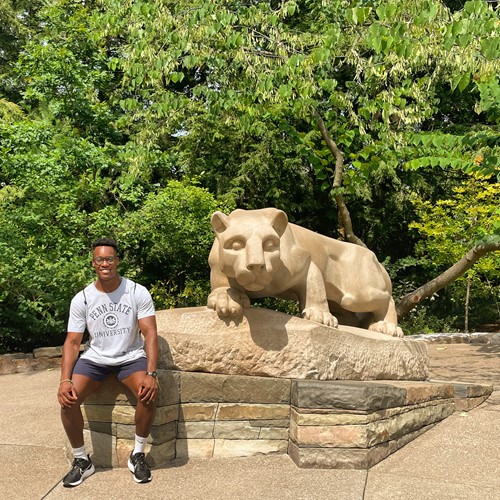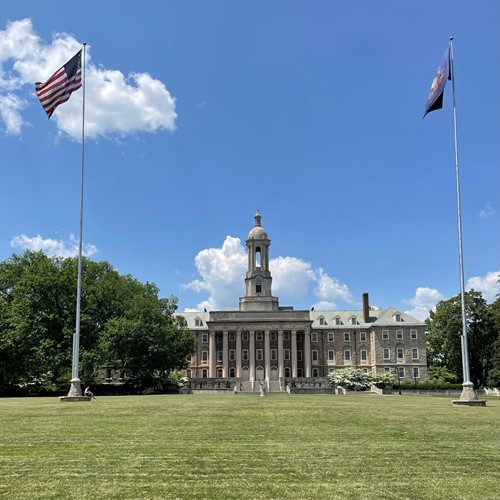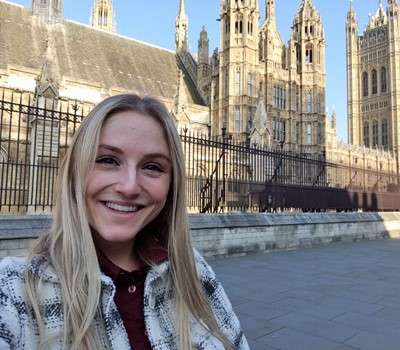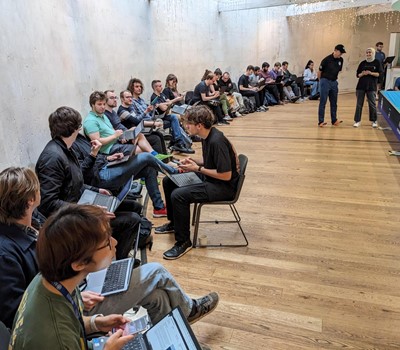November 01 2023
Ultrasound NDE offers unique promise in characterising the SoC of lithium-ion batteries, which are crucial for the transition towards electrified transportation. The unique capability of ultrasound NDE lies in obtaining acousto-mechanical information about the state of the battery which can be correlated to its SoC, without causing any harm to the battery itself. This sets it apart from most conventional methods which can only estimate SoC and SoH either by tracking usage, or requiring dedicated and costly tests. The ability to more quickly and accurately determine SoC is of paramount relevance in automotive applications, offering the possibility of utilising batteries more fully and closer to their limits without risking safety or longevity.
Mac Geoffrey, a AAPS CDT cohort 3 student, is pushing beyond the existing state of the art to harness the potential of ultrasound NDE to provide precise and reliable measurements of battery SoC. His PhD journey, under the supervision of Dr Chris Vagg and Dr Charles Courtney from the Department of Mechanical Engineering at the University of Bath, is driven by the vision of enabling real-time assessments of battery conditions. The ultimate goal is to ensure that electric vehicles operate with unparalleled precision and efficiency.

What distinguishes ultrasound NDE is its capacity to offer a safe and cost-effective technique that is not reliant on the historical data or prior charge/discharge cycles of the battery. This non-invasive technique has the potential to optimise the charging and discharging processes, therefore extending the operational life of lithium-ion batteries - a vital factor in the pursuit of sustainable mobility solutions for the automotive industry.
At the outset of his research project, Mac Geoffrey recognised the value of collaboration and decided to join forces with the Argüelles Research Group at the College of Engineering Science and Mechanics of Penn State. Together, they applied spatial mapping methods to a lithium-ion pouch battery, providing key information about the longitudinal wave speed and signal attenuation varying as the battery cycled. To allow this, C-scans were conducted in an acoustic immersion system in pulse-echo mode.
The Argüelles Lab captured the interest of Mac Geoffrey because of the lab's growing reputation as a place of excellence in ultrasound NDE applications for materials characterisation. The lab is at the forefront of pioneering research conducted across multiple length scales and different stages of manufacturing processes. Their approach, grounded in integrated experimental and modelling methodologies, offers an ideal platform for advancing the understanding of lithium-ion batteries.
By capitalising on the experience of the Argüelles Lab in post-process inspection, multi-scale characterisation of components ready for service, exploration of process-structure-property relationships, and considerations related to inspectability in complex component certification for safety-critical applications, Mac Geoffrey aimed to establish a robust correlation between ultrasound-derived wave speed, attenuation metrics, and the SoC of the battery.

Over a span of three months, Mac Geoffrey worked at University Park of Penn State University in State College, Pennsylvania. During this time he conducted an array of experiments, both using immersion and contact tests, also in collaboration with the Kube Lab and the BATTERY Lab at Penn State. Outside the lab, Mac Geoffrey immersed himself in the vibrant culture of State College, PA. He actively participated in different activities, including leisurely downtown walks, sport events, and engaging in trivia nights with fellow researchers. One indelible memory from his visit was the experience of attending the 4th of July celebration, also known as Independence Day in the United States. The highlight of the evening was without a doubt the beautiful display of fireworks - a tradition that symbolised the strong sense of community and shared pride and joy among the attendees.
In retrospect, Mac Geoffrey cherishes this transformative adventure, not only for the scientific experiences made but also for the friendships forged. The collaborative partnership among research groups continues to evolve, offering promising prospects for showcasing the valuable work accomplished during the summer. Collectively, they are poised to make valuable scientific contributions in the area of ultrasound NDE for the characterisation of lithium-ion batteries, pushing the state of the art in this field and contributing to the advancement of sustainable energy solutions for the future. The academic secondment was made possible thanks to funding secured from the AAPS CDT International Travel Scheme, the Institute of Engineering and Technology (IET) Travel Award, and Santander Mobility Fund.

28 February 2024

18 January 2024

29 November 2023

13 November 2023
© Copyright 2024 AAPS CDT, Centre for Doctoral Training in Advanced Automotive Propulsion Systems at the University of Bath